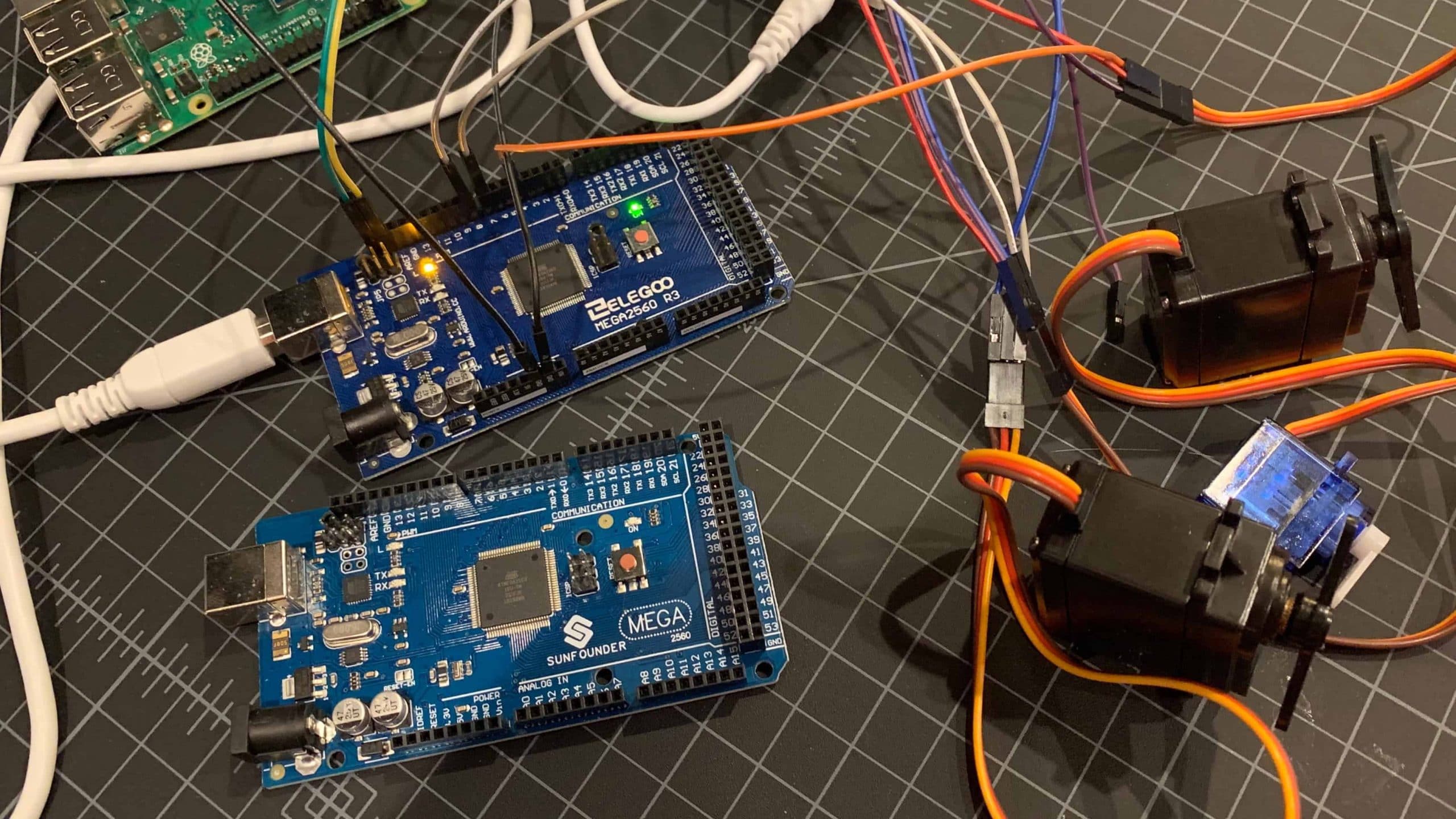
When this information is sent - bit after bit -, the called upon device executes the request and transmits it's data back - if required - to the board over the same line using the clock signal still generated by the Master on SCL as timing.īecause the I2C protocol allows for each enabled device to have it's own unique address, and as both master and slave devices to take turns communicating over a single line, it is possible for your Arduino board to communicate (in turn) with many devices, or other boards, while using just two pins of your microcontroller. As the clock line changes from low to high (known as the rising edge of the clock pulse), a single bit of information - that will form in sequence the address of a specific device and a a command or data - is transferred from the board to the I2C device over the SDA line.
#ARDUINO I2C EXAMPLE SLAVE SERIAL#
The I2C protocol involves using two lines to send and receive data: a serial clock pin (SCL) that the Arduino Master board pulses at a regular interval, and a serial data pin (SDA) over which data is sent between the two devices. Once that message is received, it can then be viewed in the Arduino Software (IDE) serial monitor window. Arduino 1, the Master, is programmed to request, and then read, 6 bytes of data sent from the uniquely addressed Slave Arduino.

Several functions of Arduino's Wire Library are used to accomplish this. In this example, two boards are programmed to communicate with one another in a Master Reader/Slave Sender configuration via the I2C synchronous serial protocol. In some situations, it can be helpful to set up two (or more!) Arduino boards to share information with each other.


 0 kommentar(er)
0 kommentar(er)
